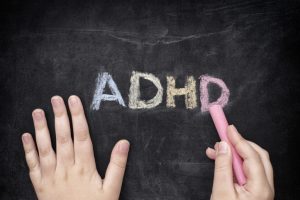
Think about it this way: our eyes take in visual information, and our brain then processes that information. If the original information that is sent to our brain is faulty, it can make learning extremely difficult. It is important for parents to realize that it is possible that a correctable vision problem could be challenging their child’s learning capabilities.
Currently more than 11 percent of children in America are considered to have Attention Deficit Hyperactivity Disorder (ADHD). Approximately 90 percent of children diagnosed with ADHD have vision problems, and a majority of those vision problems are the real cause of the symptoms that people mistake for ADHD. There are a number of vision issues that are not tested for in a basic eye exam that can create symptoms mistaken for ADHD. Symptoms of vision problems that are typically assumed to be ADHD symptoms are: hyperactivity, impulsiveness, short attention span, fidgety and easily distractible.
Since most of the vision problems that create ADHD-like symptoms cannot be discovered in a basic eye exam, the vision problem is often left untreated. It is possible that people who can see perfectly 20 feet away can have near vision deficiencies that make sitting still and reading during class very difficult and uncomfortable. If a teacher sees a child losing focus during class or fidgeting in their desk, they may label them as having a learning disability, ADHD or even just as being lazy. When in all reality, it is very possible that the child has an undiagnosed vision problem.
Some of the more common vision problems that can produce the same symptoms as those diagnosed for ADHD or a learning disability include:
Convergence Insufficiency (CI)
- Affects nearly 20 percent of the population.
- Patients have trouble converging the eyes together for near work such as reading and homework.
- Causes extreme discomfort doing near work, and the patient can usually only concentrate for a short period of time before becoming fidgety.
- A high number of patients diagnosed with ADHD actually have CI instead, which is treatable with vision therapy.
Tunnel Vision
- Patients have restricted peripheral or “side” vision.
- When reading, a patient with tunnel vision can only focus on one word at a time and cannot scan ahead to the next word or track across the page.
- Near work such as reading is frustrating, time-consuming and often leads to inattentiveness and hyperactivity.
- Studies have shown there is a high incidence of tunnel vision in people diagnosed with ADHD.
Focusing, Eye Teamwork and Tracking Disorders
- Many people unknowingly have these problems and subconsciously compensate.
- Any one or all of them together will produce symptoms that are mistaken for ADHD.
- Trouble focusing causes a child to become agitated and avoid near work.
- Poor eye teaming forces one eye to do most of the work, and it becomes overwhelming for the child.
If your child has trouble focusing or learning in school, call us today at 618-288-1489 or contact us to schedule an appointment. Since vision problems are all too often the real culprit behind children’s learning challenges, a thorough eye examination conducted at Vision for Life will properly diagnose your child. If we discover a vision problem impeding the learning process, we have many successful avenues to treat your child, including vision therapy and colored light therapy. We will develop an individualized program just for your child that can improve vision and make learning more natural and easier – and perhaps even fun! Please contact us today and let us help improve your child’s future.